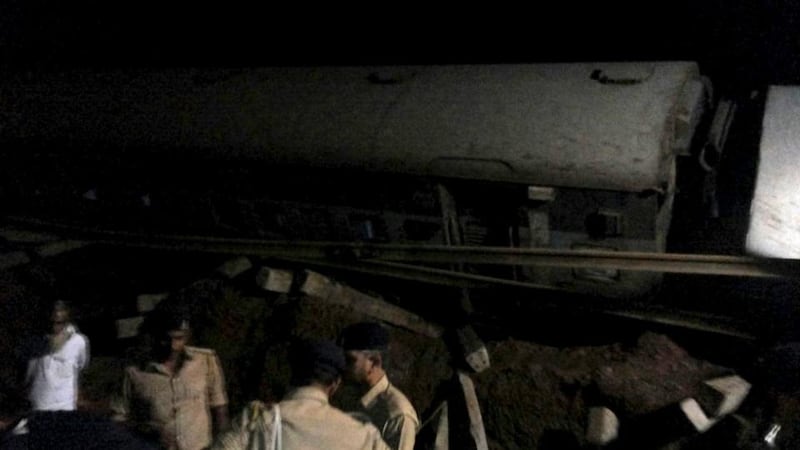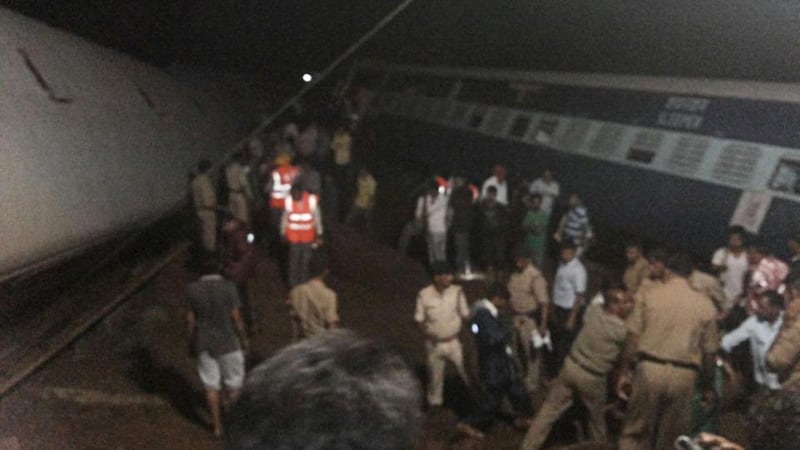At least 27 people died when two trains derailed within minutes of each other in India's central Madhya Pradesh province, after flash floods struck a decrepit bridge both were crossing.
Officials feared the death toll, which included 11 women and five children, could rise as some passengers might have drowned in the raging Kali Machak river into which some carriages tumbled near Harda, 160km south of the provincial capital Bhopal.
Some 300 people were rescued after the Kamayani Express travelling from Mumbai to Varanasi, 815km southeast of New Delhi, derailed shortly before midnight on Tuesday, after the creaking bridge near Harda was inundated by water from the rising river below.


Minutes later the Janata Express, going in the opposite direction from the eastern city of Patna to Mumbai, also derailed at the exact same spot.
Television images showed crumpled train coaches smashed into each other and some toppled into the river.
Passengers from both ill-fated trains told television news channels that they were jolted awake after their carriages broke apart and began filling with muddy water.
“It (the train) shook like a tree in storm. We thought something had hit the train,” passenger Santosh Singh told one of the news channels. “The water level on the track was almost waist high. I cannot say how many people were washed away” Shanti Bhushan, another passenger said.
"The accident took place because of flash floods on the tracks which caved in, leading to one train's derailment," Indian Rail spokesman Anil Saksena said. Almost simultaneously, another train travelling in the opposite direction too derailed, adding to the chaos, he said.
Rescuers worked through the night, mostly in darkness and in pouring rain and hampered by floodwaters, trying to free those trapped in the mangled coaches.
Little outside help was available as all roads leading to the accident site were damaged, officials said. Divers used gas-powered cutters to access the submerged carriages, officials said.
Vast regions across India have been badly hit by heavy monsoon rain and the tail end of Cyclone Koman in recent days.
More than 100 people have died in flooding, landslides and building collapses in eastern and central India as a consequence.
The government has ordered an inquiry into the train derailments and prime minister Narendra Modi expressed sadness at the loss of life. "Authorities are doing everything possible on the ground. The situation is being monitored very closely," Mr Modi said on Twitter.
Safety standards on India’s vast rail network, which operates over 12,000 passengers trains that carry 23 million passengers daily, is one of the world’s largest but is poorly funded and accidents are frequent.
In March a passenger train derailed in northern Uttar Pradesh state, killing 34 people. And a year earlier, at least 11 people died after three coaches of the Bangalore-Ernakulam Express derailed in southern India.
The government has pledged to invest €125 billion to modernise this crumbling rail infrastructure, making trains safer, faster and more efficient, but little of this money has actually been spent.
Indian trains are unbelievably overcrowded and handicapped by outdated technology such as signaling systems, corroding tracks and old bridges dating back to colonial times, all of which combine to cause accidents.
In Mumbai, for instance, some 3,500 people die each year on the city’s suburban rail tracks that transport some eight million commuters daily, the highest fatality rate of any such network in the world.
Hundreds of other commuters, who travel atop trains to avoid suffocating crowds, die after being electrocuted by overhead high voltage cables or being crushed by passing trains whilst hanging from carriage doors and windows.












